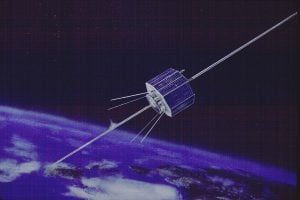The AMSAT Board of Directors met on December 2, 2014. As a part of AMSAT’s “Design The Next AMSAT Satellite” challenge, the Board of Directors approved $5000, within the 2015 engineering budget, to be used as seed money for future satellite development. Additional fund raising sources will also be investigated and pursued.
AMSAT President Barry Baines, WD4ASW, said, “We’re prepared to return to space starting in 2015 with a fleet of satellites that will equal, if not exceed, the performance, and availability to the average ham, of our previously popular AMSAT OSCAR 51. Meanwhile, we are preparing for the future looking to potentially leverage new technologies, to provide the best opportunities for enhancing amateur radio’s presence in space.”
Director Tom Clark, K3IO, noted the need for a defined future systems program. Tom said, “We saw a significant number of both new and old members who want to see the development of critical system elements for future opportunities by 2018-20. As I see it, critical ‘tall poles’ in applying potential technologies require significant work to begin now to ensure success.”
AMSAT is interested in supporting technology ideas that enhance the utility of using the CubeSat form factor to support more robust amateur satellite capabilities. The scope of potential interest in not limited; some examples of technology enhancement might include:
+ Microwave technology suitable for use in amateur spacecraft. This includes the need to identify optimum frequency bands.
+ Complementary, low-cost ground systems, including an effective ~1º antenna pointing system.
+ Define and develop optimum coding and modulation schemes for low power microwave use.
+ Attitude determination & control systems to point the spacecraft antennas towards the user while maximizing solar panel production.
Individuals interested in learning more about this initiative should contact AMSAT Vice President-Engineering Jerry Buxton, N0JY using the contact form found here.
Meanwhile, the development of AMSAT’s current series of the Fox-1 cubesats continues on schedule. AMSAT Vice-President of Engineering, Jerry Buxton, N0JY reported during the Board meeting that construction and testing of five Fox satellites is on schedule:
+ Fox-1A will launch on a NASA ELaNa flight during the 3rd quarter of 2015 from Vandenberg AFB,
+ Fox-1B will fly with the Vanderbilt University radiation experiments expected in 2016.
+ Fox-1C will launch on Spaceflight’s maiden mission of the SHERPA multi-cubesat deployer during the 3rd quarter of 2015. This flight was purchased by AMSAT.
+ Fox-1D is a flight spare for Fox-1C. If not needed as a spare it will become available to launch on any open launch slot which becomes available and be submitted in a CSLI proposal in 2015.
+ Fox-1E is built as a flight spare for Fox-1B but has been included in a student science proposal as part of the November, 2014 Cubesat Launch Initiative (CSLI) for an ELaNa flight slot. If selected the Fox-1B spare will fly as Fox-1E.
More details of the “Design The Next AMSAT Satellite” challenge can be found on-line at:
http://www.amsat.org/wordpress/?p=3395 – and – in the November/December 2014 AMSAT Journal, currently in-transit to your QTH.
[ANS thanks the AMSAT Board Of Directors for the above information]


